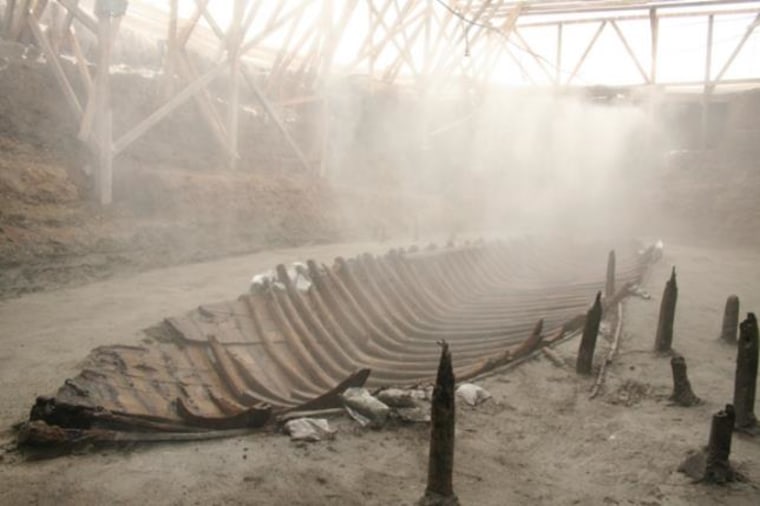Archaeological excavations in Turkey that began in 2004 have yielded a unique historical treasure — 37 shipwrecks from the Byzantine Empire, eight of which are now described in a new report.
The shipwrecks were discovered at a site called Yenikapi, in Istanbul, in what was a port of the ancient city, then called Constantinople. The ships date back to the fifth to 11th centuries, and are in exceptionally good condition, archaeologists say.
"Never before has such a large number and types of well-preserved vessels been found at a single location," said study author Cemal Pulak, of the Institute of Nautical Archaeology at Texas A&M University.

The eight shipwrecks highlighted in the new report, which date from the seventh to 10th centuries, show that the shipbuilders at the time were using a more complex process than previously thought, according to the researchers. [Photos: 8 Byzantine Empire Era Shipwrecks Excavated in Turkey]
Each of the ships incorporated elements characteristic of two shipbuilding methods. In one method, the shell of a ship was built first. In the other, the ship's skeleton was constructed first, and then the planks were attached. The researchers' analysis showed that a transition from a shell-first to a skeleton-first approach was already well under way by the seventh century.
"It is through meticulous and time-consuming detective work that we slowly begin to understand how these ships were built, modified, overhauled and used," Pulak told Live Science. "By such means, we try to understand the minds of the shipbuilders and their design and conceptualization processes, in order to better comprehend the history of science and engineering."
Previously, Byzantine galleys were known only from books and artwork dating to the time period, and such sources tend to be difficult to interpret. Much of the information about other types of Byzantine ships had come from several medium-size seagoing ships that had been excavated in the Mediterranean, Pulak said.
A large museum in Istanbul is being planned to exhibit many of the wrecks, Pulak said. The report was published online Dec. 8 in the International Journal of Nautical Archaeology.
— Agata Blaszczak-Boxe, LiveScience
This is a condensed version of a report from LiveScience. Read the full report. Follow Agata Blaszczak-Boxe on Twitter. Follow LiveScience on Twitter, Facebook andGoogle+.